RBS 2011 Annual Report Download - page 355
Download and view the complete annual report
Please find page 355 of the 2011 RBS annual report below. You can navigate through the pages in the report by either clicking on the pages listed below, or by using the keyword search tool below to find specific information within the annual report.-
 1
1 -
 2
2 -
 3
3 -
 4
4 -
 5
5 -
 6
6 -
 7
7 -
 8
8 -
 9
9 -
 10
10 -
 11
11 -
 12
12 -
 13
13 -
 14
14 -
 15
15 -
 16
16 -
 17
17 -
 18
18 -
 19
19 -
 20
20 -
 21
21 -
 22
22 -
 23
23 -
 24
24 -
 25
25 -
 26
26 -
 27
27 -
 28
28 -
 29
29 -
 30
30 -
 31
31 -
 32
32 -
 33
33 -
 34
34 -
 35
35 -
 36
36 -
 37
37 -
 38
38 -
 39
39 -
 40
40 -
 41
41 -
 42
42 -
 43
43 -
 44
44 -
 45
45 -
 46
46 -
 47
47 -
 48
48 -
 49
49 -
 50
50 -
 51
51 -
 52
52 -
 53
53 -
 54
54 -
 55
55 -
 56
56 -
 57
57 -
 58
58 -
 59
59 -
 60
60 -
 61
61 -
 62
62 -
 63
63 -
 64
64 -
 65
65 -
 66
66 -
 67
67 -
 68
68 -
 69
69 -
 70
70 -
 71
71 -
 72
72 -
 73
73 -
 74
74 -
 75
75 -
 76
76 -
 77
77 -
 78
78 -
 79
79 -
 80
80 -
 81
81 -
 82
82 -
 83
83 -
 84
84 -
 85
85 -
 86
86 -
 87
87 -
 88
88 -
 89
89 -
 90
90 -
 91
91 -
 92
92 -
 93
93 -
 94
94 -
 95
95 -
 96
96 -
 97
97 -
 98
98 -
 99
99 -
 100
100 -
 101
101 -
 102
102 -
 103
103 -
 104
104 -
 105
105 -
 106
106 -
 107
107 -
 108
108 -
 109
109 -
 110
110 -
 111
111 -
 112
112 -
 113
113 -
 114
114 -
 115
115 -
 116
116 -
 117
117 -
 118
118 -
 119
119 -
 120
120 -
 121
121 -
 122
122 -
 123
123 -
 124
124 -
 125
125 -
 126
126 -
 127
127 -
 128
128 -
 129
129 -
 130
130 -
 131
131 -
 132
132 -
 133
133 -
 134
134 -
 135
135 -
 136
136 -
 137
137 -
 138
138 -
 139
139 -
 140
140 -
 141
141 -
 142
142 -
 143
143 -
 144
144 -
 145
145 -
 146
146 -
 147
147 -
 148
148 -
 149
149 -
 150
150 -
 151
151 -
 152
152 -
 153
153 -
 154
154 -
 155
155 -
 156
156 -
 157
157 -
 158
158 -
 159
159 -
 160
160 -
 161
161 -
 162
162 -
 163
163 -
 164
164 -
 165
165 -
 166
166 -
 167
167 -
 168
168 -
 169
169 -
 170
170 -
 171
171 -
 172
172 -
 173
173 -
 174
174 -
 175
175 -
 176
176 -
 177
177 -
 178
178 -
 179
179 -
 180
180 -
 181
181 -
 182
182 -
 183
183 -
 184
184 -
 185
185 -
 186
186 -
 187
187 -
 188
188 -
 189
189 -
 190
190 -
 191
191 -
 192
192 -
 193
193 -
 194
194 -
 195
195 -
 196
196 -
 197
197 -
 198
198 -
 199
199 -
 200
200 -
 201
201 -
 202
202 -
 203
203 -
 204
204 -
 205
205 -
 206
206 -
 207
207 -
 208
208 -
 209
209 -
 210
210 -
 211
211 -
 212
212 -
 213
213 -
 214
214 -
 215
215 -
 216
216 -
 217
217 -
 218
218 -
 219
219 -
 220
220 -
 221
221 -
 222
222 -
 223
223 -
 224
224 -
 225
225 -
 226
226 -
 227
227 -
 228
228 -
 229
229 -
 230
230 -
 231
231 -
 232
232 -
 233
233 -
 234
234 -
 235
235 -
 236
236 -
 237
237 -
 238
238 -
 239
239 -
 240
240 -
 241
241 -
 242
242 -
 243
243 -
 244
244 -
 245
245 -
 246
246 -
 247
247 -
 248
248 -
 249
249 -
 250
250 -
 251
251 -
 252
252 -
 253
253 -
 254
254 -
 255
255 -
 256
256 -
 257
257 -
 258
258 -
 259
259 -
 260
260 -
 261
261 -
 262
262 -
 263
263 -
 264
264 -
 265
265 -
 266
266 -
 267
267 -
 268
268 -
 269
269 -
 270
270 -
 271
271 -
 272
272 -
 273
273 -
 274
274 -
 275
275 -
 276
276 -
 277
277 -
 278
278 -
 279
279 -
 280
280 -
 281
281 -
 282
282 -
 283
283 -
 284
284 -
 285
285 -
 286
286 -
 287
287 -
 288
288 -
 289
289 -
 290
290 -
 291
291 -
 292
292 -
 293
293 -
 294
294 -
 295
295 -
 296
296 -
 297
297 -
 298
298 -
 299
299 -
 300
300 -
 301
301 -
 302
302 -
 303
303 -
 304
304 -
 305
305 -
 306
306 -
 307
307 -
 308
308 -
 309
309 -
 310
310 -
 311
311 -
 312
312 -
 313
313 -
 314
314 -
 315
315 -
 316
316 -
 317
317 -
 318
318 -
 319
319 -
 320
320 -
 321
321 -
 322
322 -
 323
323 -
 324
324 -
 325
325 -
 326
326 -
 327
327 -
 328
328 -
 329
329 -
 330
330 -
 331
331 -
 332
332 -
 333
333 -
 334
334 -
 335
335 -
 336
336 -
 337
337 -
 338
338 -
 339
339 -
 340
340 -
 341
341 -
 342
342 -
 343
343 -
 344
344 -
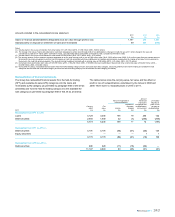 345
345 -
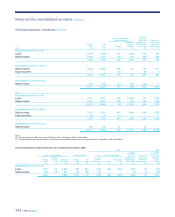 346
346 -
 347
347 -
 348
348 -
 349
349 -
 350
350 -
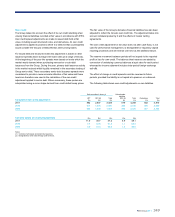 351
351 -
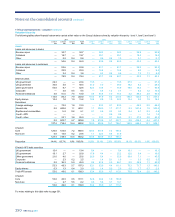 352
352 -
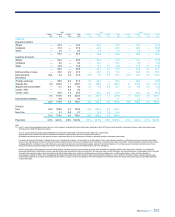 353
353 -
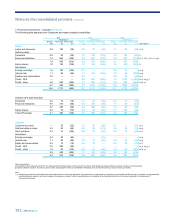 354
354 -
 355
355 -
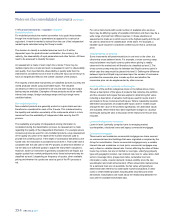 356
356 -
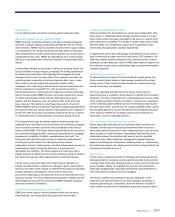 357
357 -
 358
358 -
 359
359 -
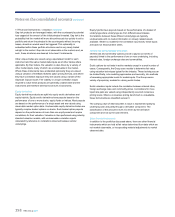 360
360 -
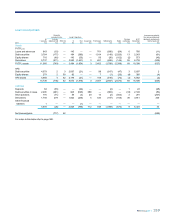 361
361 -
 362
362 -
 363
363 -
 364
364 -
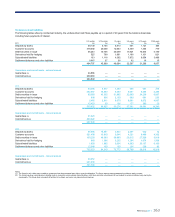 365
365 -
 366
366 -
 367
367 -
 368
368 -
 369
369 -
 370
370 -
 371
371 -
 372
372 -
 373
373 -
 374
374 -
 375
375 -
 376
376 -
 377
377 -
 378
378 -
 379
379 -
 380
380 -
 381
381 -
 382
382 -
 383
383 -
 384
384 -
 385
385 -
 386
386 -
 387
387 -
 388
388 -
 389
389 -
 390
390 -
 391
391 -
 392
392 -
 393
393 -
 394
394 -
 395
395 -
 396
396 -
 397
397 -
 398
398 -
 399
399 -
 400
400 -
 401
401 -
 402
402 -
 403
403 -
 404
404 -
 405
405 -
 406
406 -
 407
407 -
 408
408 -
 409
409 -
 410
410 -
 411
411 -
 412
412 -
 413
413 -
 414
414 -
 415
415 -
 416
416 -
 417
417 -
 418
418 -
 419
419 -
 420
420 -
 421
421 -
 422
422 -
 423
423 -
 424
424 -
 425
425 -
 426
426 -
 427
427 -
 428
428 -
 429
429 -
 430
430 -
 431
431 -
 432
432 -
 433
433 -
 434
434 -
 435
435 -
 436
436 -
 437
437 -
 438
438 -
 439
439 -
 440
440 -
 441
441 -
 442
442 -
 443
443 -
 444
444 -
 445
445 -
 446
446 -
 447
447 -
 448
448 -
 449
449 -
 450
450 -
 451
451 -
 452
452 -
 453
453 -
 454
454 -
 455
455 -
 456
456 -
 457
457 -
 458
458 -
 459
459 -
 460
460 -
 461
461 -
 462
462 -
 463
463 -
 464
464 -
 465
465 -
 466
466 -
 467
467 -
 468
468 -
 469
469 -
 470
470 -
 471
471 -
 472
472 -
 473
473 -
 474
474 -
 475
475 -
 476
476 -
 477
477 -
 478
478 -
 479
479 -
 480
480 -
 481
481 -
 482
482 -
 483
483 -
 484
484 -
 485
485 -
 486
486 -
 487
487 -
 488
488 -
 489
489 -
 490
490
 |
 |

RBS Group 2011 353
Key points
xTotal assets carried at fair value increased by £96.1 billion in the
year to £882.2 billion at 31 December 2011, principally reflecting
increases in derivative assets (£102.5 billion), reverse repos (£9.0
billion) and derivative collateral (£2.2 billion), partially offset by
decreases in debt securities (£7.4 billion) and equity shares (£7.0
billion).
xTotal liabilities carried at fair value increased by £115.7 billion, with
increases in derivative liabilities (£100.0 billion), repos (£15.2 billion)
and collateral (£4.0 billion), partially offset by decreases in debt
securities in issue (£4.0 billion) and short positions (£2.1 billion).
xLevel 3 assets of £16.4 billion represented 1.9% (2010 - £15.7 billion
and 2.0%) of assets at fair value, an increase of £0.7 billion. This
reflected transfers from level 2 to level 3 of £5.7 billion based on a
review in the latter part of 2011 in light of liquidity in the market,
maturity and sale of instruments. These transfers related to ABS in
Non-Core Markets and certain foreign exchange options and credit
derivatives in GBM. £1.9 billion was transferred from level 3 to level
2, based on the re-assessment of the impact and nature of
unobservable inputs used in valuation models.
xLevel 3 liabilities increased to £6.3 billion in the year from £4.8 billion,
mainly in credit derivatives due to market liquidity and resultant
transfers from level 2 to level 3.
xThe favourable and unfavourable effects of reasonably possible
alternative assumptions on level 3 instruments carried at fair value
excluding APS credit derivatives were £2.0 billion favourable (2010 -
£1.7 billion favourable) and £1.4 billion unfavourable (2010 - £1.2
billion unfavourable) respectively. Favourable and unfavourable
sensitivities for APS credit derivatives were £0.3 billion (2010 - £0.9
billion favourable) and £0.1 billion unfavourable (2010 - £0.9 billion
unfavourable). The change in APS sensitivities reflected the
decrease in overall value of the Scheme.
xThere were no significant transfers between level 1 and level 2.
The level 3 sensitivities above are calculated at a trade or low level
portfolio basis. They are not calculated on an overall portfolio basis and
therefore do not reflect the likely overall potential uncertainty on the
whole portfolio. The figures are aggregated and do not reflect the
correlated nature of some of the sensitivities. In particular, for some of the
portfolios the sensitivities may be negatively correlated where a
downwards movement in one asset would produce an upwards
movement in another, but due to the additive presentation of the above
figures this correlation cannot be observed. For example, with assets in
the APS, the downwards sensitivity on the underlying asset would be
partially offset by the consequent upward movement of the APS
derivative, so whilst the net sensitivity of the two positions may be lower,
it would be shown with the gross upside and downside sensitivity of the
two assets inflating the overall sensitivity figures in the above table. The
actual potential downside sensitivity of the total portfolio may be less than
the non-correlated sum of the additive figures as shown in the above
table.
Judgmental issues
The diverse range of products traded by the Group results in a wide
range of instruments that are classified into the three level hierarchy.
Whilst the majority of these instruments naturally fall into a particular
level, for some products an element of judgment is required. The majority
of the Group’s financial instruments carried at fair value are classified as
level 2: inputs are observable either directly (i.e. as a price) or indirectly
(i.e. derived from prices).
Active and inactive markets
Akey input in the decision making process for the allocation of assets to
aparticular level is liquidity. In general, the degree of valuation
uncertainty depends on the degree of liquidity of an input. For example, a
derivative can be placed into level 2 or level 3 dependent upon its
liquidity.
Where markets are liquid or very liquid, little judgment is required.
However, when the information regarding the liquidity in a particular
market is not clear, a judgment may need to be made. This can be made
more difficult as assessing the liquidity of a market may not always be
straightforward. For an equity traded on an exchange, daily volumes of
trading can be seen, but for an-over-the counter (OTC) derivative
assessing the liquidity of the market with no central exchange can be
more difficult.
Akey related issue is where a market moves from liquid to illiquid or vice
versa. Where this change is considered to be temporary, the
classification is not changed. For example, if there is little market trading
in a product on a reporting date but at the previous reporting date and
during the intervening period the market has been considered to be
liquid, the instrument will continue to be classified in the same level in the
hierarchy. This is to provide consistency so that transfers between levels
are driven by genuine changes in market liquidity and do not reflect short
term or seasonal effects.
Interaction with the IPV process
The determination of an instrument’s level cannot be made at a global
product level as a single product type can be in more than one level. For
example, a single name corporate credit default swap could be in level 2
or level 3 depending on whether the reference counterparty is liquid or
illiquid.
As part of the Group’s IPV process, data is gathered at a trade level from
market trading activity, trading systems, pricing services, consensus
pricing providers, brokers and research material amongst other sources.
The breadth and detail of this data allows a good assessment to be made
of liquidity and pricing uncertainty, which assists with the process of
allocation to an appropriate level. Where suitable independent pricing
information is not readily available the instrument will be considered to be
level 3.
